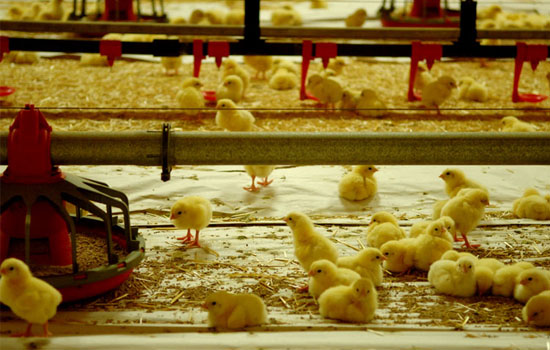Environmental control of broiler chicken house
- font size decrease font size increase font size
Creating a living environment that is conducive to rapid growth and healthy development is a basic requirement for the healthy growth of broilers. What should be the environmental control of broiler houses?
temperature control
Chicks lack thermoregulatory capacity and must provide a suitable temperature. The temperature is too high, the intake is reduced, the drinking water is increased, and the growth is slow; if the temperature is too low, it is easy to cause respiratory diseases, indigestion, increase feed consumption, and the piles may cause the chicken to die. When the temperature is suitable, the chicks are evenly distributed and the activities are normal.
Humidity control
Humidity is the water content in the air, and proper humidity is closely related to the normal development of the chicken. Humidity is high, the house is damp, the bacteria breeds fast, the chicken is prone to disease; the humidity is small, the house is dry and dusty, and the chicken is prone to respiratory diseases. During the brooding period (the first 3 weeks), the relative humidity is controlled at 65% to 70%. During this period, the air is easy to dry due to the high temperature, and it is necessary to prevent the chicks from dehydrating due to low humidity.

Ventilation control
Ventilation and ventilation is to properly exclude the dirty air, pathogenic microorganisms, dust and moisture in the house, reduce their influence on the growth and development of the chicken, and exchange the fresh air outside to promote the rapid growth of the chicken. Ventilation can be done by natural ventilation and mechanical ventilation.
Lighting control
Control lighting is mainly to control the lighting time and light intensity. There are two characteristics of broiler illumination: 1 The illumination time should be as long as possible, which is the need to prolong the feeding time of the chicken, adapt to rapid growth, and shorten the growth cycle. 2 The light intensity should be as weak as possible, in order to reduce the excitement and movement of the chicken and improve the feed efficiency.
Density control
The brooding density refers to the number of chicks fed per square meter of the chicken battery cages . Appropriate stocking density can ensure the normal growth and development of chicks. The breeding density is too large, the chicks are crowded and piled up, the growth is slow, the development is not neat, the environmental pollution is aggravated, the disease spreads quickly, and the mortality rate is high. The density is too small, which is not conducive to heat preservation, resulting in waste of feeding area, energy, labor and so on. The feeding density of broilers should be flexibly controlled according to the specific conditions of the structure, ventilation and feeding conditions of the house.

